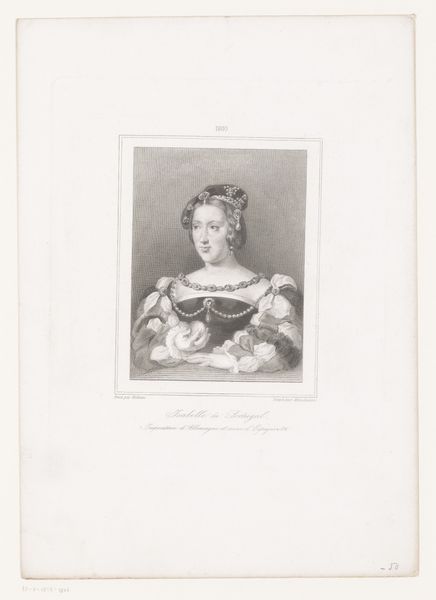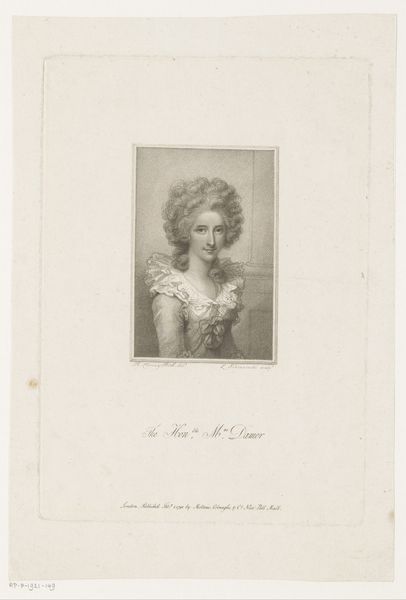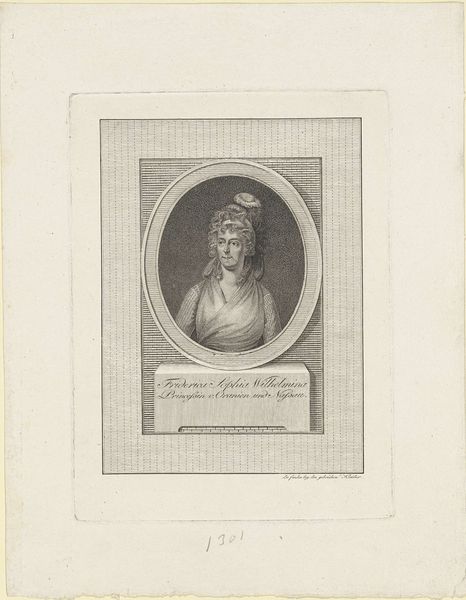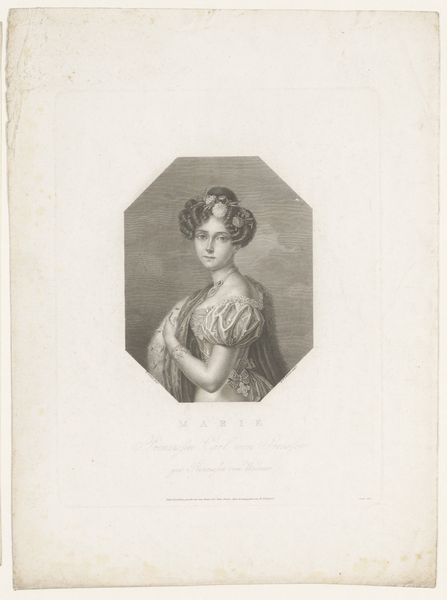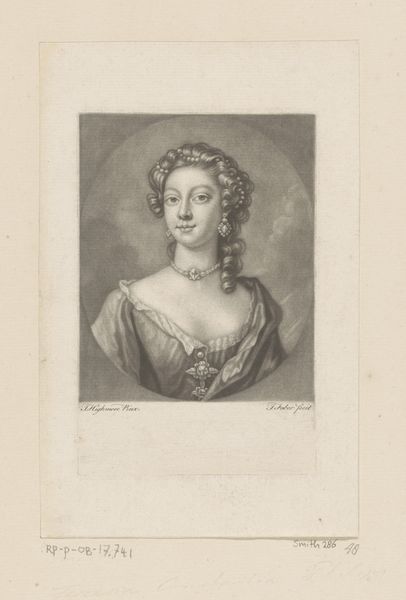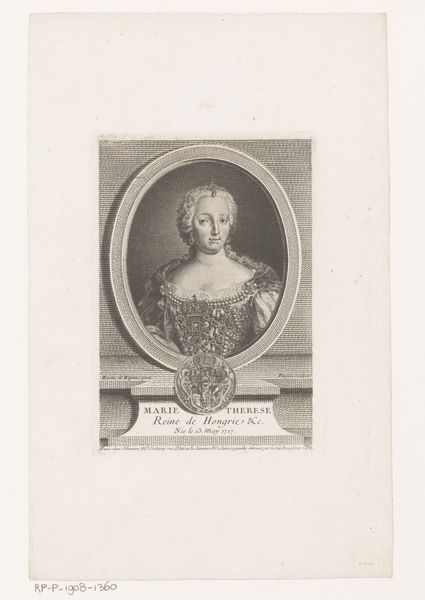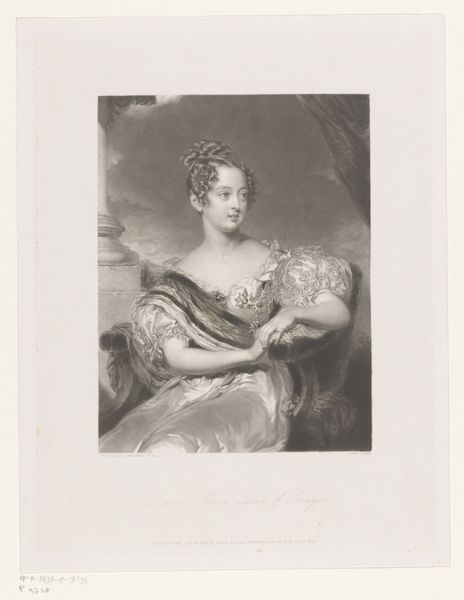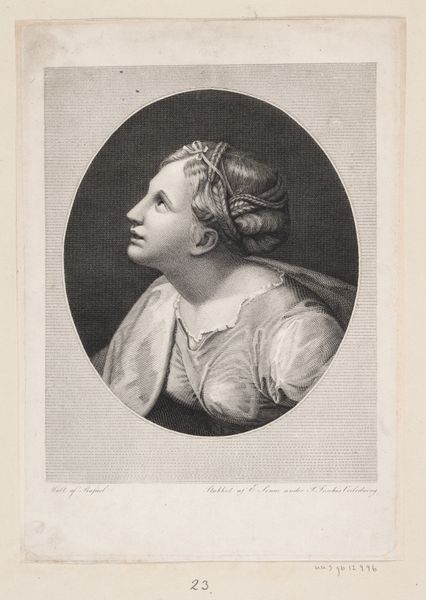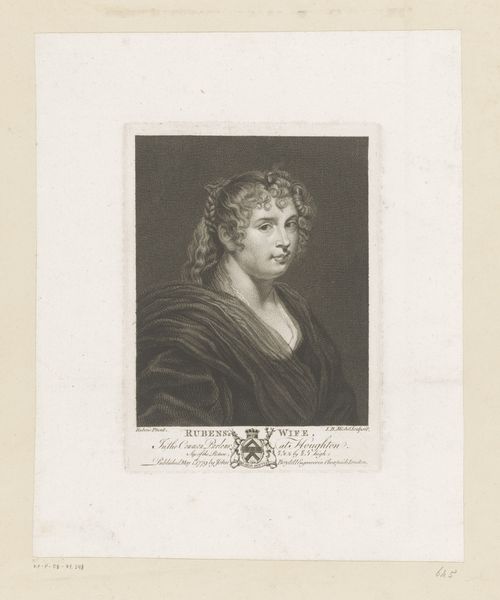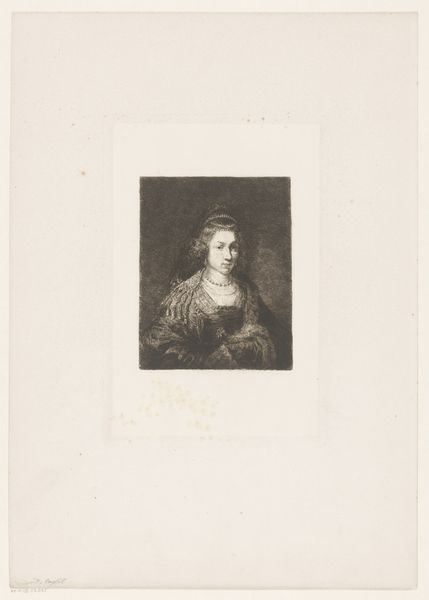
drawing, print
#
portrait
#
drawing
#
neoclacissism
# print
#
realism
Dimensions: height 154 mm, width 113 mm
Copyright: Rijks Museum: Open Domain
Editor: This is "Portret van Helena Charlotte von Württemberg," a print from sometime between 1824 and 1846, housed right here at the Rijksmuseum. Something about it feels...staged, almost like a doll. What do you make of it? Curator: Ah, Helena! It does have that poised, porcelain quality. Look closely, and I think you'll find that balance of classical ideals with a touch of nascent realism. The artist, David Weiss, captures her in a way that reflects her status, that almost ethereal quality – royalty and all. Yet, there's something else in those eyes, a fleeting glimmer of humanity perhaps? Does it spark any feelings for you? Editor: Definitely a feeling of distance. Like she's behind glass, untouchable. Is that typical of portraiture from this period? Curator: Very astute! This piece sits right on that cusp. Neoclassicism still demanded a level of idealization, that pursuit of perfect form, a connection to the grand traditions, while the pull of Realism was inching ever closer. She’s lovely, but almost… standardized. And prints, remember, were meant for wider circulation, so this was an image crafted for public consumption, designed to project a very specific idea of aristocracy. Almost as though nobility demanded this exact appearance. What do you think it projects? Editor: Control, maybe? Serenity? It's hard to imagine her being anything other than perfectly composed. Curator: Precisely! It's fascinating how much art reflects – and shapes – societal expectations, wouldn't you agree? It does make one wonder what Helena herself might have thought. Editor: Absolutely! It really opens up the picture when you think about what's not being said or shown. Curator: Agreed! This portrait suddenly is way more interesting now we can begin to imagine her story.
Comments
No comments
Be the first to comment and join the conversation on the ultimate creative platform.
